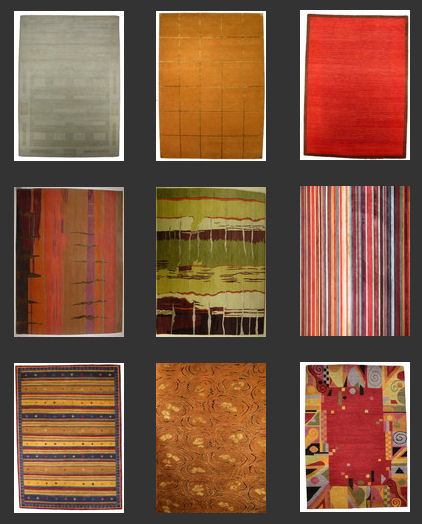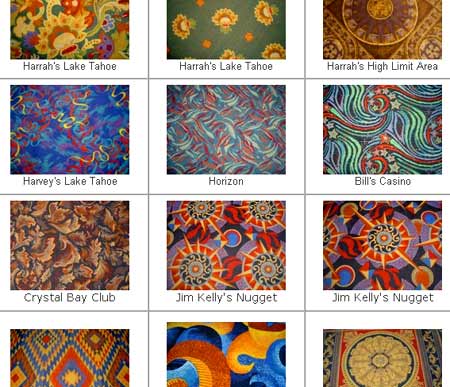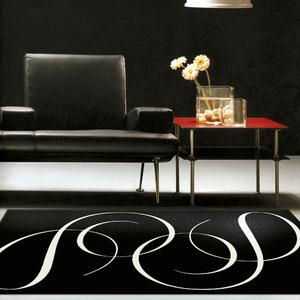The Carpet is an ancient human invented. Even in Ancient Greece and Ancient Rome almost every woman has ruled takachestvoto art. During the Middle Ages have lost traditions of weaving with wool, but has preserved the art of woven tapestries, which are ukrasyavali walls and floors of stone castles. Prepared by the hands of znatni ladies were gorgeous objects. Objectives are represented by pictures of complex compositions heraldic motifs and military scenes. During the Vazrozhdenieto of weaving carpets has acquired enormous scale. XVII century in France has become a leading country in Europe in the production of carpets.

* Asian nations in a sharp continental climate and are woven wool and silk carpets. For beduinite they were essential, then the subject of style. Spread them on the premises and have them hanging on the wall. Thus was stored heat is created microclimate. Waves are pleli carpets and fabrics by hand. In each village had its decorative preferences and equipment for manufacturing. Gradually in quantity and quality of the carpets have begun to assess the financial condition of the people. Carpets are inheritance, and the wealthy farmers were ordered carpets in artists who have become a work of art.
* In medieval Europe eastern carpets have appeared in the castles of baronite and hertsozite with returnees from Asia krastonostsi. The richest and gorgeous models are be hung in the royal chamber. From this period begins in Afghan uvlechenieto.

* In preparation methods carpets are handmade and machine made. Hand-woven rug is a work of art. Such carpets are expensive and are assessed in auktsionite, depending on the time and place of manufacture. Age of the carpet can be 300 years. As is the old carpet, so it is more expensive.

* The material from which the carpet is produced may be different: wool flax, silk, cotton, it is always a major cotton. The most expensive are koprinenite carpets, but they are very rare. More often are carpets of rayon, cotton imititatsiya silk.
* The technique of producing traditional Oriental carpets is essential in cotton knitting basis. There is also technique of embroidered with cross-stitch hand-in basis, consisting of stuck in between your threads. These carpets like many of the tissues tapestries and serve mainly to decorate walls and furniture.
* The quality of carpets, fabrics machines is determined mainly by the density of the carpet in exactly the quantity of units per square decimetre. Handmade carpets for this rule does not apply. Each country has its traditions and preferences to the density of the carpets. Carpets machine production differ significantly from hand-woven carpets in production techniques and materials. Mainly used synthetic materials (acrylic, poliestar, PA) and wool.

* To check the quality of the carpet can yourself. The thread of good quality carpets are envy, which provides long eternity and good performance. As is more difficult to get to nishkite to the base of carpets, it is better quality.

* In pre-production of carpets there are several types of technologies. One major type are carpets. They have size, suitable for covering large areas.
More Carpets Pictures:







* Asian nations in a sharp continental climate and are woven wool and silk carpets. For beduinite they were essential, then the subject of style. Spread them on the premises and have them hanging on the wall. Thus was stored heat is created microclimate. Waves are pleli carpets and fabrics by hand. In each village had its decorative preferences and equipment for manufacturing. Gradually in quantity and quality of the carpets have begun to assess the financial condition of the people. Carpets are inheritance, and the wealthy farmers were ordered carpets in artists who have become a work of art.
* In medieval Europe eastern carpets have appeared in the castles of baronite and hertsozite with returnees from Asia krastonostsi. The richest and gorgeous models are be hung in the royal chamber. From this period begins in Afghan uvlechenieto.

* In preparation methods carpets are handmade and machine made. Hand-woven rug is a work of art. Such carpets are expensive and are assessed in auktsionite, depending on the time and place of manufacture. Age of the carpet can be 300 years. As is the old carpet, so it is more expensive.

* The material from which the carpet is produced may be different: wool flax, silk, cotton, it is always a major cotton. The most expensive are koprinenite carpets, but they are very rare. More often are carpets of rayon, cotton imititatsiya silk.
* The technique of producing traditional Oriental carpets is essential in cotton knitting basis. There is also technique of embroidered with cross-stitch hand-in basis, consisting of stuck in between your threads. These carpets like many of the tissues tapestries and serve mainly to decorate walls and furniture.
* The quality of carpets, fabrics machines is determined mainly by the density of the carpet in exactly the quantity of units per square decimetre. Handmade carpets for this rule does not apply. Each country has its traditions and preferences to the density of the carpets. Carpets machine production differ significantly from hand-woven carpets in production techniques and materials. Mainly used synthetic materials (acrylic, poliestar, PA) and wool.

* To check the quality of the carpet can yourself. The thread of good quality carpets are envy, which provides long eternity and good performance. As is more difficult to get to nishkite to the base of carpets, it is better quality.

* In pre-production of carpets there are several types of technologies. One major type are carpets. They have size, suitable for covering large areas.
More Carpets Pictures:











0 comments:
Post a Comment